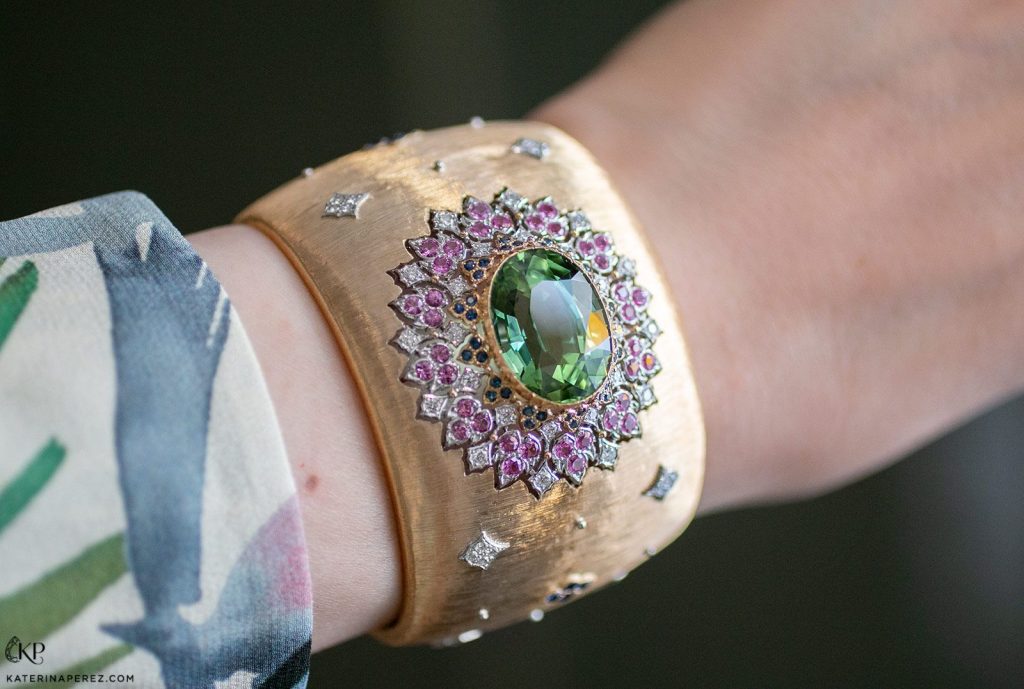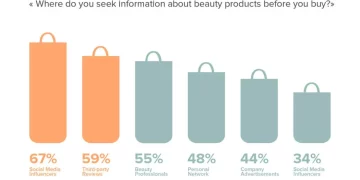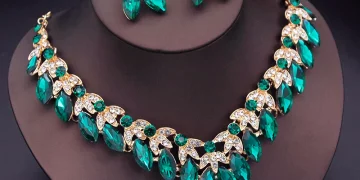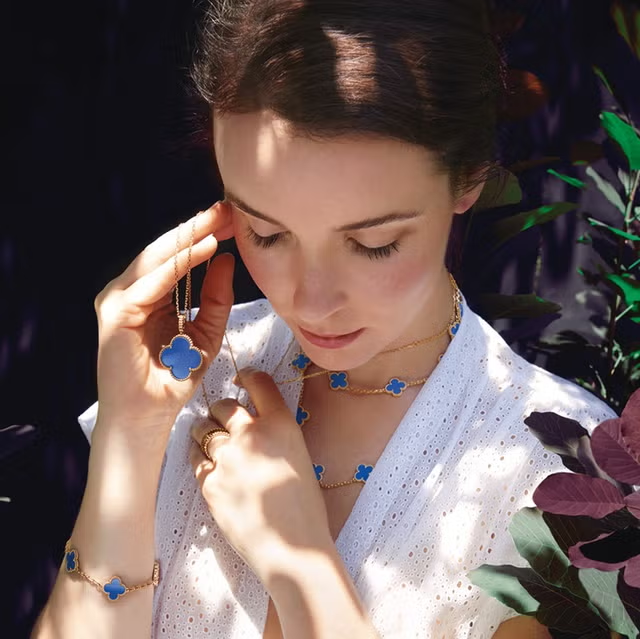In the highly competitive global jewelry market, standing out can be a challenging task for emerging brands. The jewelry industry is saturated with well-established names like Tiffany & Co., Cartier, Bvlgari, and Van Cleef & Arpels, all of which have deep-rooted histories, loyal customer bases, and immense brand recognition. However, for new entrants or even established brands looking to expand their footprint, it’s possible to carve out a distinctive position in the market. Success in the jewelry industry, particularly on a global scale, requires a combination of creativity, strategic marketing, craftsmanship, and understanding of consumer trends.
This article will delve into the key strategies and best practices to build a jewelry brand that stands out in a competitive global market.
1. Craft a Unique Brand Identity
A. Define Your Brand’s Story and Values
Every successful jewelry brand has a unique narrative that resonates with its target audience. Whether it’s a focus on heritage, innovation, sustainability, or artisan craftsmanship, your brand story should be compelling and authentic. Today’s consumers, especially millennials and Gen Z, are highly conscious of the brands they support and are often more interested in a brand’s ethics, mission, and values than ever before.
To create an identity that resonates, focus on the following:
- Heritage and Craftsmanship: If your brand is inspired by a long-standing tradition of craftsmanship, make sure to highlight the artistry, techniques, and values passed down through generations.
- Sustainability: If your jewelry is ethically sourced, made with eco-friendly materials, or produced through responsible labor practices, showcase this commitment clearly. Many consumers are now prioritizing sustainability over traditional luxury.
- Innovation: If your designs or production methods are cutting-edge, emphasize innovation. This could be through the use of new technologies, such as 3D printing, lab-grown diamonds, or bespoke design processes.
A powerful brand story will not only differentiate your brand but also foster an emotional connection with your customers.
B. Develop a Signature Style or Niche
Jewelry brands that stand out often have a signature style or niche that sets them apart. Think of Cartier’s iconic Love bracelet, David Yurman’s twisted cable designs, or Chopard’s ethical luxury collections. These signature elements instantly make these brands recognizable and distinct.
To carve out your own niche:
- Experiment with unique designs, materials, and concepts. Whether it’s through avant-garde pieces, vintage-inspired collections, or designs influenced by nature, find something that resonates with your target demographic and ensures that your brand is visually and conceptually distinct.
- Consider gender-neutral designs, affordable luxury, or collections that cater to a specific cultural or regional influence.
- Stay true to your brand’s ethos and maintain consistency across all your collections, marketing campaigns, and product lines.
2. Offer High-Quality Craftsmanship and Materials
A. Ensure Exceptional Craftsmanship
Jewelry is not just about the design; it’s also about the quality of the craftsmanship. High-end buyers expect exceptional quality, whether they are purchasing a statement piece or an everyday accessory. Therefore, investing in top-tier craftsmanship is paramount for building a brand that is trusted and respected globally.
Key factors to focus on:
- Skilled artisans: If possible, partner with or employ skilled jewelers who specialize in intricate metalwork, gemstone setting, engraving, and polishing.
- Premium materials: Whether it’s ethically sourced diamonds, rare gemstones, or high-quality metals like 18k gold, platinum, or titanium, the materials used must reflect the luxury status you want to achieve.
Quality craftsmanship creates a lasting impression, leading to customer loyalty and word-of-mouth referrals. A product’s durability and attention to detail will also justify its price, ensuring it is perceived as a worthwhile investment.
B. Transparent Sourcing and Sustainability
As sustainability becomes a central concern for many consumers, ensuring that your materials are responsibly sourced and transparently traced is essential. Jewelry brands that prioritize ethical sourcing can build trust and authenticity with their customers, especially in regions where sustainability is a key consideration. Brands like Tiffany & Co. have embraced the idea of responsible mining and eco-friendly practices in their manufacturing processes, which has strengthened their position in the market.
Consumers are increasingly aware of the negative impacts of the jewelry industry, particularly regarding conflict diamonds, child labor, and environmental degradation. By sourcing conflict-free diamonds, using recycled gold, and promoting lab-grown diamonds, your brand can appeal to conscious consumers.
3. Invest in Effective Marketing Strategies
A. Leverage Digital Marketing and Social Media
In the modern age, digital presence is crucial to building a global jewelry brand. Social media platforms like Instagram, Pinterest, and TikTok are perfect for showcasing visually stunning jewelry pieces, while Facebook, Twitter, and LinkedIn are better suited for brand storytelling and community engagement. Jewelry is a highly visual product, so it’s essential to craft visually compelling content that reflects your brand’s identity.
Social media strategies to consider:
- Influencer partnerships: Partnering with influencers, celebrities, or fashion icons can significantly boost brand awareness and credibility. Influencers can help showcase your jewelry to their vast followings, while aligning your brand with high-profile figures can elevate your status.
- User-generated content: Encouraging customers to share photos of themselves wearing your jewelry is a powerful form of marketing. Feature their content on your brand’s social media accounts to create a sense of community and authenticity.
- Live streaming and e-commerce integration: Platforms like Instagram and Facebook now offer live shopping features, where you can showcase new collections and directly sell to viewers. Engage with your audience in real-time to create excitement around new releases.
- Sustainability marketing: Promote your sustainable practices and ethically sourced materials, as consumers today are highly attracted to brands that are socially responsible.
Additionally, investing in search engine optimization (SEO) and pay-per-click (PPC) campaigns can help bring your website to the attention of prospective customers globally.
B. Collaborate with Luxury Retailers and E-commerce Platforms
In addition to your own direct-to-consumer efforts, establishing partnerships with luxury retailers or top-tier e-commerce platforms can significantly expand your brand’s reach. Collaborating with global platforms like Net-a-Porter, Farfetch, or SSENSE can give your brand international exposure.
Alternatively, entering partnerships with high-end department stores such as Harrods, Neiman Marcus, or Saks Fifth Avenue can help your brand gain credibility and access to affluent customers.

4. Build a Strong Customer Experience and Loyalty Program
A. Offer Exceptional Customer Service
Providing exceptional customer service is crucial for building long-term brand loyalty, especially in the luxury jewelry market. Clients expect personalized experiences and seamless interactions, whether they are purchasing online or visiting a physical boutique.
Some ways to elevate your customer service include:
- Personal shopping assistants: Offer exclusive personal shopping services to high-end clients who are willing to make significant investments.
- After-sales care: Offering maintenance services like resizing, cleaning, and repairs, as well as providing extended warranties or guarantees, ensures that customers feel supported long after their purchase.
- Packaging and presentation: The unboxing experience should be as luxurious as the jewelry itself. Invest in high-quality packaging that elevates the customer’s experience and reinforces your brand’s luxury image.
B. Loyalty Programs and VIP Treatment
Creating a loyalty program or offering VIP treatment to repeat customers can go a long way in ensuring that customers return. For example, offering discounts on future purchases, early access to new collections, or special invitations to private events will foster a sense of exclusivity and reward your most dedicated buyers.
5. Expand Globally with a Strategic Approach
A. Tailor Products to Local Markets
While it’s essential to maintain a strong, consistent brand identity, understanding and adapting to local tastes is key when expanding into global markets. Jewelry preferences can vary greatly by region due to cultural differences, style preferences, and economic factors. For example, Chinese consumers may prefer designs with symbolism related to prosperity, while Middle Eastern buyers may gravitate toward more ornate and luxurious designs.
Working with local designers, collaborating with regional influencers, or creating collections that speak to the traditions and values of different cultures will help your brand resonate with a diverse global audience.
B. Consider Logistics and Local Partnerships
When expanding internationally, logistical considerations—such as shipping, customs, and warehousing—become increasingly important. Partnering with established local distributors or retailers can help mitigate the challenges of entering new markets. Additionally, opening flagship stores in key cities like New York, Paris, Dubai, and Shanghai can help cement your brand’s luxury status.
Conclusion: Building a Jewelry Brand That Stands Out Globally
Building a jewelry brand that stands out in the global market requires a multi-faceted approach that combines a unique identity, high-quality craftsmanship, innovative marketing, exceptional customer experiences, and strategic global expansion. By crafting a compelling brand story, offering sustainable products, and embracing modern digital marketing techniques, a new jewelry brand can successfully differentiate itself in a crowded market. Moreover, understanding cultural nuances and adapting to local tastes will help brands grow their reach internationally.
The key to standing out lies in creating a brand that not only offers stunning jewelry but also reflects the values and aspirations of today’s global consumers. By staying ahead of trends, engaging with your customers, and providing top-tier products and services, you can build a jewelry brand that is poised for success in the ever-evolving global marketplace.
















































